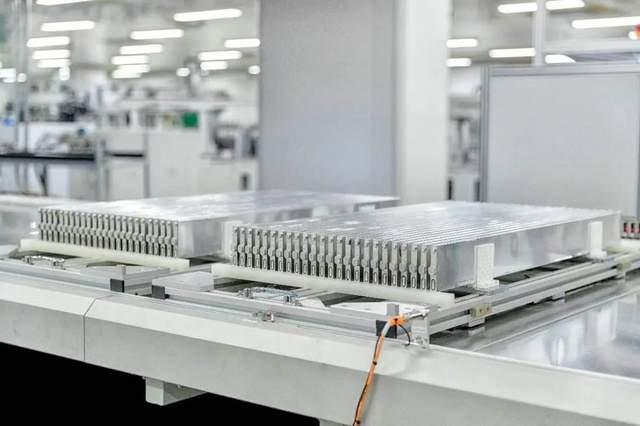As an upgraded version of lithium iron phosphate (LFP), lithium manganese iron phosphate (LFMP) is becoming a new hot spot in the power battery track. Whether it is an automaker, a battery manufacturer, or anode material manufacturers, they are all extending their hands to this field.
Lithium manganese iron phosphate (LiMnxFe1-xPO4) is a new type of phosphate-based lithium-ion battery cathode material formed by doping a certain proportion of manganese (Mn) on the basis of lithium iron phosphate (LiFePO4). Through the doping of manganese, on the one hand, the advantages of iron and manganese can be effectively combined, and on the other hand, both manganese and iron are located in the fourth subgroup of the periodic table and are adjacent to each other, with similar ions Radius and some chemical properties, so doping will not significantly affect the original structure.
Lithium iron phosphate is a lithium-ion battery electrode material, which is mainly used in various lithium-ion batteries. Lithium iron phosphate has an orderly and regular olivine structure, in which lithium ions have one dimensional mobility, and can be reversibly extracted and intercalated during charge and discharge. Lithium iron phosphate started earlier, and its technology development is relatively mature. Its core advantages are low price, environmental friendliness, high safety performance, good structural stability and cycle performance. The disadvantages are poor low temperature performance and low energy density.

LMFP is a mixed product of lithium iron phosphate and lithium manganese phosphate. It has the same structure as lithium iron phosphate, and is an orderly and regular olivine structure. Therefore, lithium manganese iron phosphate and lithium iron phosphate have the same advantages of low cost, high safety performance, high thermal stability, no spontaneous combustion after needle punching and overcharging, long life, safety and no risk of explosion, and at the same time make up for the advantages of iron phosphate Lithium’s short board.
Compared with lithium iron phosphate, lithium iron phosphate has an energy density advantage. Specifically, the voltage platform of lithium iron phosphate is as high as 4.1V, which is significantly higher than that of lithium iron phosphate (3.4V). The high-voltage platform can increase the energy density of the corresponding battery. Under certain conditions, its theoretical energy density is 15%-20% higher than that of lithium iron phosphate, which can basically reach the level of the ternary battery NCM523, so that it can provide electric vehicles with higher lithium iron phosphate Higher battery life.
Lithium manganese iron phosphate battery (LMFP Battery) can support the cruising range of electric vehicles up to 700 kilometers. “The cruising range of the QJIE M5 EV standard version CLTC equipped with lithium iron phosphate battery can reach 620 kilometers, and the Lithium manganese iron phosphate battery (LMFP Battery) can guarantee safety. Compared with lithium iron phosphate, the energy density will be further improved. In the future, the lithium manganese iron phosphate system and the continuous optimization of the group efficiency of CTP, CTC and other systems, so the corresponding electric vehicle mileage can exceed 700 kilometers.”
In addition, compared with lithium iron phosphate(LFP), lithium manganese iron phosphate (LMFP) has the advantage of low temperature performance. The capacity retention rate of lithium manganese iron phosphate can reach about 75% at -20°C, while the capacity retention rate of lithium iron phosphate is 60%-70%. Due to the abundance of manganese ore resources in the world, the cost of lithium iron manganese phosphate is only about 5%-10% higher than that of lithium iron phosphate. In addition, considering the increase in the energy density of lithium iron manganese, the cost per watt-hour of lithium iron phosphate is slightly lower in terms of battery installation costs In lithium iron phosphate, and significantly lower than ternary batteries.
At present, in the field of power batteries, the mainstream application materials are lithium iron phosphate with olivine structure and layered ternary nickel-cobalt-manganese material (NCM), and LMFP is used as a positive electrode development material based on lithium iron phosphate. Compared with the performance of the two, each has its own advantages and disadvantages.
Compared with lithium iron phosphate battery (LFP battery), the advantages and disadvantages of lithium manganese iron phosphate battery (LMFP battery)
Advantages: The high voltage characteristics of manganese make lithium manganese iron phosphate have a higher voltage platform, which also leads to a higher energy density at the same specific capacity, and the energy density is 10% higher than that of lithium iron phosphate under the same conditions -20%.
Disadvantage: The introduction of manganese significantly reduces the conductivity of the material. At the same time, a higher voltage platform also means higher requirements for the electrolyte, and there are relatively few types of electrolytes that meet the discharge characteristics.

Compared with ternary NCM materials, the advantages and disadvantages of lithium manganese iron phosphate (LMFP):
Advantages: Compared with the layered structure of ternary NCM materials, lithium manganese iron phosphate has the same olivine structure as lithium iron phosphate, and the structure is more stable during charging and discharging. Structural collapse will occur, so the safety is better and the cost is lower.
Disadvantages: Compared with high-efficiency ternary materials, the specific capacity and energy density of lithium manganese iron phosphate are still very low, and the gap in conductivity is even greater. This has also led to the current application of lithium manganese iron phosphate more in small power fields such as electric two-wheeled vehicles with relatively low performance requirements.
